Abstract
Purpose
The objective of this study was to evaluate and compare the accuracy of impression body taking by the closed and the open tray impression technique with 3 types of impression tray. Individual tray, metal stock tray and polycarbonate tray were used.
Materials and methods
Nine closed tray impressions were taken by individual tray, metal stock tray and polycarbonate stock tray, respectively with polyether impression material. 9 open tray impressions were also acquired by same manner. Precision analysis on the master models was performed by attaching the reference frameworks with alternate single screws and measuring the vertical fit discrepancy of respective analogues in working cast with a stereo microscope. Data were analyzed by 1 way ANOVA and independent t-test.
Results
The average fit accuracy of impression bodies was calculated. With the closed tray impression technique, there were significant statistical differences in vertical fit discrepancy according to the types of tray. The individual tray group showed the lowest value and the polycarbonate stock tray group represented the highest. With the open tray impression technique, there was no significant difference in vertical fit discrepancy. Significant statistical difference in vertical fit discrepancy was found between the open and the closed impression technique with the polycarbonate stock tray.
Conclusion
From the results above, more precise impressions could be acquired by the rigid individual tray compared with the polycarbonate stock tray. It was hard to get consistent accuracy impressions by the closed tray impression technique with polycarbonate stock trays. (J Korean Acad Prosthodont 2010;48:48-54)
Go to : 
REFERENCES
1.Adell R., Lekholm U., Rockler B., Bra � nemark PI. A 15-year study of osseointegrated implants in the treatment of the edentulous jaw. Int J Oral Surg. 1981. 10:387–416.

2.Phillips KM., Nicholls JI., Ma T., Rubenstein J. The accuracy of three implant impression technique. A three dimensional analysis. Int J Oral Maxillofac Implant. 1994. 9:533–40.
3.Humphries RM., Yaman P., Bloem TJ. The accuracy of implant master casts constructed from transfer impressions. Int J Oral Maxillofac Implants. 1990. 5:331–6.
4.Rangert B., Jemt T., Jo ¨rneus L. Forces and moments on Branemark implants. Int J Oral Maxillofac Implants. 1989. 4:241–7.
5.Naconecy MM., Teixeira ER., Shinkai RS., Frasca LC., Cervieri A. Evaluation of the accuracy of 3 transfer techniques for implant-supported prostheses with multiple abutments. Int J Oral Maxillofac Implants. 2004. 19:192–8.
7.Leonhardt A., Renvert S., Dahle ′n G. Microbial findings at failing implants. Clin Oral Implants Res. 1999. 10:339–45.

8.Skalak R. Biomechanical considerations in osseointegrated prostheses. J Prosthet Dent. 1983. 49:843–8.

9.Nissan J., Barnea E., Krauze E., Assif D. Impression technique for partially edentulous patients. J Prosthet Dent. 2002. 88:103–4.

10.Carr AB. Comparison of impression techniques for a five-implant mandibular model. Int J Oral Maxillofac Implants. 1991. 6:448–55.
11.Rodney J., Johansen R., Harris W. Dimensional accuracy of two implant impression copings. J Dent Res. 1991. 70:385. (abstract no. 953).
12.Burton JF., Hood JA., Plunkett DJ., Johnson SS. The effects of disposable and custom-made impression trays on the accuracy of impressions. J Dent. 1989. 17:121–3.

13.Bomberg TJ., Hatch RA., Hoffman W Jr. Impression material thickness in stock and custom trays. J Prosthet Dent. 1985. 54:170–2.

14.Ryu SI., Chang IT., Kim KN. The influence of impression trays on the accuracy of the stone casts poured from complete-arch impressions. J Korean Acad Prosthodont. 1992. 30:1–14.
15.Cho GC., Chee WW. Distortion of disposable plastic stock trays when used with putty vinyl polysiloxane impression materials. J Prosthet Dent. 2004. 92:354–8.

16.Reisbick MH., Matyas J. The accuracy of highly filled elastomeric impression materials. J Prosthet Dent. 1975. 33:67–72.

17.Binon PP. The effect of implant/abutment hexagonal misfit on screw joint stability. Int J Prosthodont. 1996. 9:149–60.
18.Waskewicz GA., Ostrowski JS., Parks VJ. Photoelastic analysis of stress distribution transmitted from a fixed prosthesis attached to osseointegrated implants. Int J Oral Maxillofac Implants. 1994. 9:405–11.
19.Inturregui JA., Aquilino SA., Ryther JS., Lund PS. Evaluation of three impression techniques for osseointegrated oral implants. J Prosthet Dent. 1993. 69:503–9.

20.Burawi G., Houston F., Byrne D., Claffey N. A comparison of the dimensional accuracy of the splinted and unsplinted impression techniques for the Bone-Lock implant system. J Prosthet Dent. 1997. 77:68–75.

21.Spector MR., Donovan TE., Nicholls JI. An evaluation of impression techniques for osseointegrated implants. J Prosthet Dent. 1990. 63:444–7.

22.Lee H., So JS., Hochstedler JL., Ercoli C. The accuracy of implant impressions: a systematic review. J Prosthet Dent. 2008. 100:285–91.

23.Wee AG. Comparison of impression materials for direct multi-implant impressions. J Prosthet Dent. 2000. 83:323–31.

24.Liou AD., Nicholls JI., Yuodelis RA., Brudvik JS. Accuracy of replacing three tapered transfer impression copings in two elastomeric impression materials. Int J Prosthodont. 1993. 6:377–83.
25.Cho GC., Chee WW. Distortion of disposable plastic stock trays when used with putty vinyl polysiloxane impression materials. J Prosthet Dent. 2004. 92:354–8.

26.Masri R., Driscoll CF., Burkhardt J., Von Fraunhofer A., Romberg E. Pressure generated on a simulated oral analog by impression materials in custom trays of different designs. J Prosthodont. 2002. 11:155–60.

27.Phillips RW. Skinner' s Science of Dental Materials. 8th ed.WB Saunders Co., Philadelphia;1982. p. 137–156. p. 177–215.
28.Eames WB., Sieweke JC., Wallace SW., Rogers LB. Elastomeric impression materials: effect of bulk on accuracy. J Prosthet Dent. 1979. 41:304–7.

Go to : 
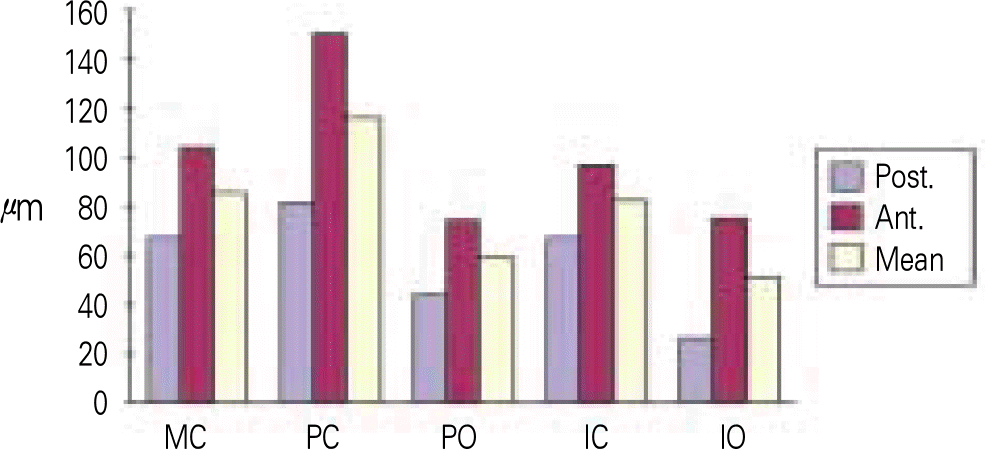 | Fig. 7.The bar graph of results of vertical gap measurements. MC : Metal stock tray + Closed tray impression technique PC : Polycarbonate stock tray + Closed tray impression technique PO : Polycarbonate stock tray + Open tray impression technique IC : Individual tray + Closed tray impression technique IO : Individual tray + Open tray impression technique (Post., posterior part of master model; Ant., Anterior part of master model) |
Table I.
Implant components used in this study
Table II.
Classification of experimental groups and number of specimens
Table III.
Results of vertical fit discrepancy (unit : μ m)
| MCA | MCP | PCA | PCP | POA | |
| Mean SD | 104.03 | 67.13 | 150.35 | 81.87 | 74.54 |
| 41.72 | 56.43 | 29.16 | 28.63 | 49.44 | |
| POP | ICA | ICP | IOA | IOP | |
| Mean SD | 43.81 | 97.04 | 67.44 | 75.00 | 26.68 |
| 28.45 | 26.16 | 21.99 | 22.13 | 8.03 |
Table V.
Results of independent t-test according to impression technique (unit : μ m)
| Mean | SD | P-value | |
|---|---|---|---|
| PC | 116.11 | 28.9 | 0.001 |
| PO | 59.17 | 38.95 |




 PDF
PDF ePub
ePub Citation
Citation Print
Print


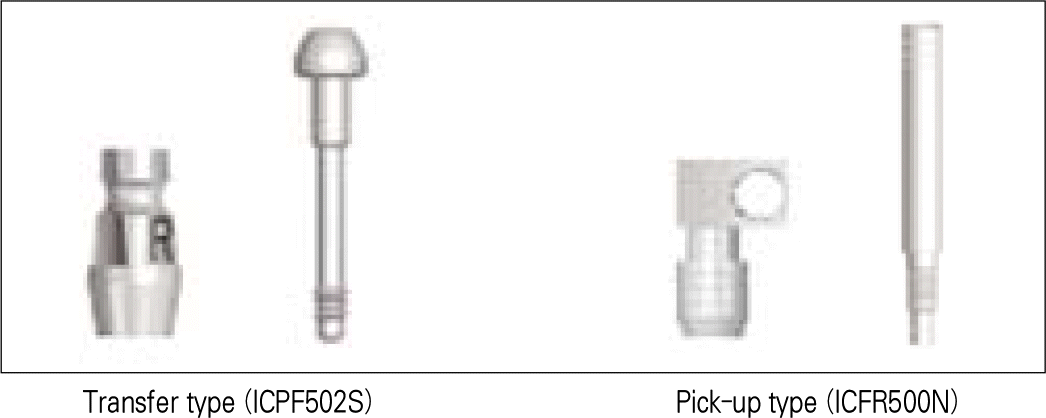
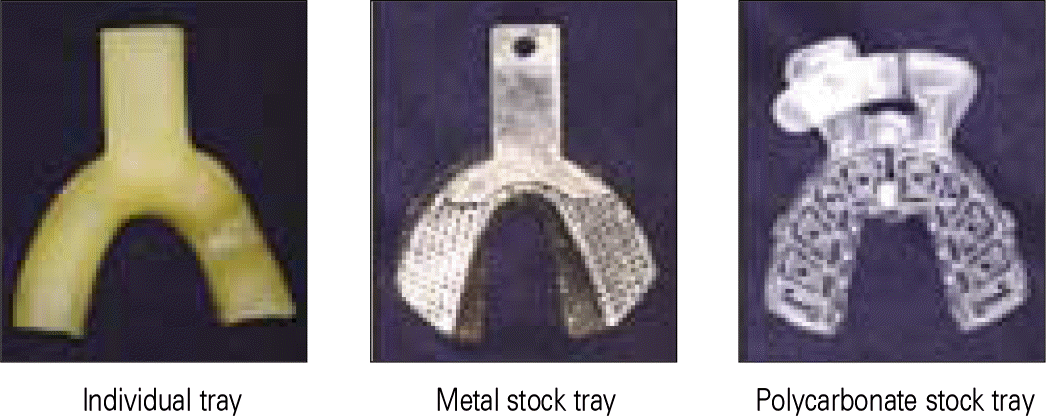
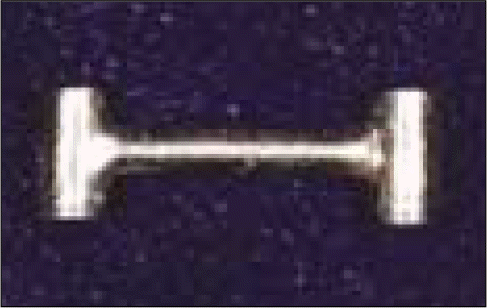
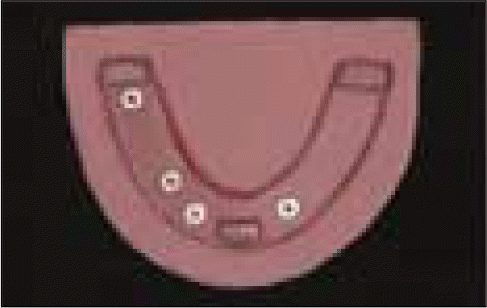
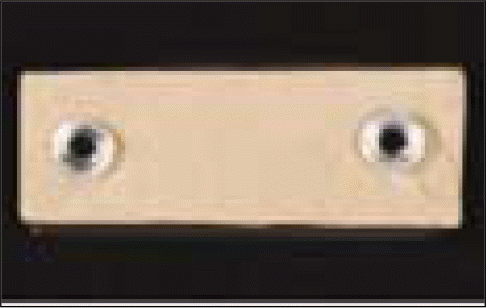
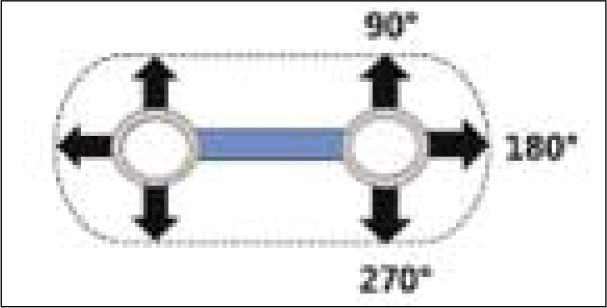
 XML Download
XML Download